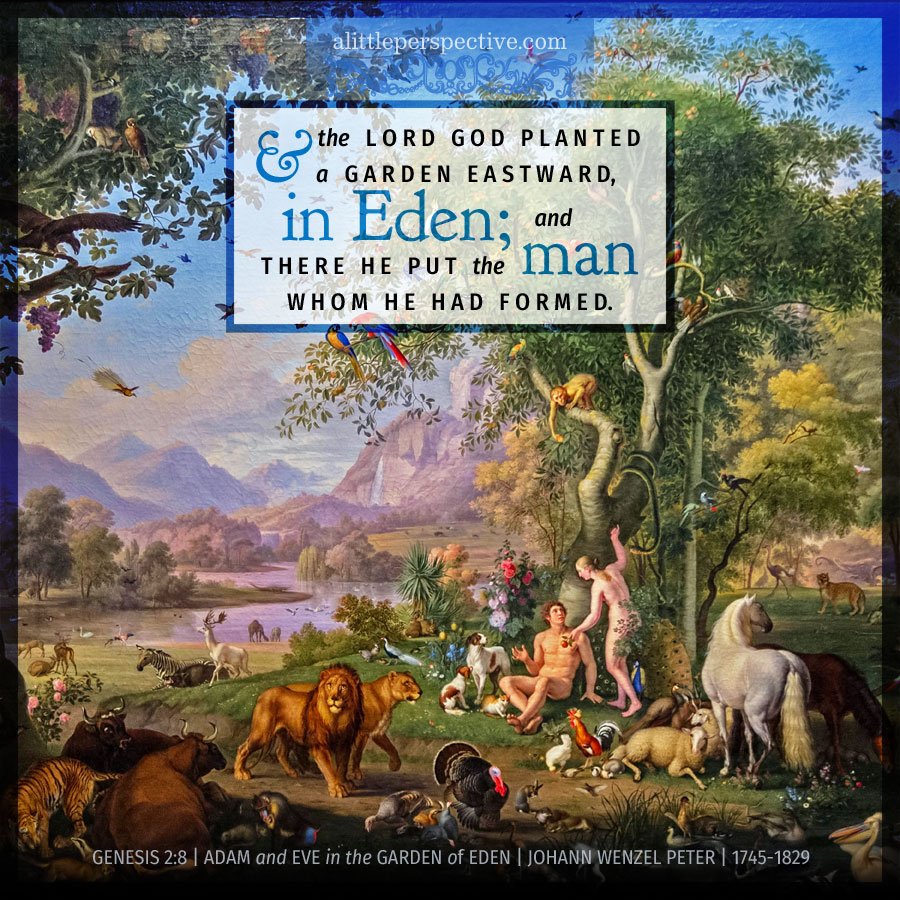Read Genesis 2:4-8 at Bible Gateway.
Hebrew paragraph divisions
Gen 2:4-3:15 {s} Disobedience to Yehovah Elohiym’s command is sin
I am not intentionally trying to go backwards in my Torah study LOL. But while moving forward this morning, it became necessary to do an investigation into the root meaning of YHVH, Yehovah, and that took me back to its first occurrence in the Scripture, which is here:
These are the generations of the heavens and of the earth when they were created, in the day that the LORD God [YHVH Elohiym] made the earth and the heavens, before any plant of the field was in the earth and before any herb of the field had grown. For the LORD God had not caused it to rain on the earth, and there was no man to till the ground; but a mist went up from the earth and watered the whole face of the ground. And the LORD God formed man of the dust of the ground, and breathed into his nostrils the breath of life; and man became a living being. The LORD God planted a garden eastward in Eden, and there He put the man whom He had formed. Gen 2:4-8.
Original Hebrew
YHVH or Yehovah: Strong’s H3068 (the proper name) from Strong’s H1961, the primitive root, hayah, to be.
hey + yud + hey
hey = the man with upraised arms, thus look, reveal, wonder, worship, breath
yud = the closed hand, thus work, throw, worship
hey = the man with upraised arms, thus look, reveal, wonder, worship, breath
The hey pictograph is interesting with a wide range of applications. The man has his arms upraised. He can be looking at something and pointing it out, so looking, behold, revelation or wonderment. It is also associated with a sharp or long intake of breath. He can be exclaiming, so excitement or emotion, rapid breathing. He can be worshiping, so introspection, deep breathing. Here, since the accepted meaning of hayah is “to be,” I think the hey indicates breathing, in the sense that breath is an indication of life, existence.
Then Yehovah Elohiym formed man of the dust of the ground, and breathed into his nostrils the breath of life; and man became a living soul. Gen 2:7.
The story the ancient pictographs are painting, is of the Living One working and creating to replicate Himself, or to produce another who has life as He has, another living one, or all that is living.
Then Yehovah Elohiym [The Living One, hey] formed man of the dust of the ground, [the closed hand representing working, taking action, yud] and breathed into his nostrils the breath of life; and man became a living soul [a second living one was brought into existence, hey]. Gen 2:7.
The most basic verb in Hebrew or in every language, “to be,” the verb of existence, carries within its spelling the narrative that all that exists and has life was brought into its existence through the creative action of the One who Exists and has life.
Yehovah, yud + hey + vav + hey, YHVH, is God’s personal name, and is derived from hayah. This is why they say His name means, I AM. I am the Living One, I exist. I am the Self-Existent and Eternal. I am He who was, and who is, and who is to come.
A second amazing story the ancient Hebrew pictographs paint of YHVH is this:
yud + hey + vav + hey
yud = the closed hand, thus work, throw, worship
hey = the man with upraised arms, thus look, reveal, wonder, worship, breath
vav = the tent peg, thus add, secure, hook
hey = the man with upraised arms, thus look, reveal, wonder, worship, breath
Taking the hey in its meaning of revelation, the story is:
The hand, behold! The nail, behold!
“See, I have inscribed you on the palms of My hands.” Isa 49:16
“Behold My hands and My feet, that it is I Myself.” Luk 24:39
Jesus was speaking to His disciples after His resurrection. He directed them to look at the nail scars on His hands and feet, left there from the crucifixion!
For further study on site
genesis 1 and 2, the hebrew root meaning of Elohiym 2011 jan 01
Genesis index of studies

















Leave a Reply